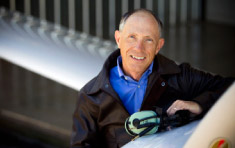Safety Pilot: Mad dogs and Englishmen
Type club training for proficiency—and friendships

Late in life, I became an aircraft owner after flying other people’s airplanes for more than 40 years. I decided to check into a type-specific clinic—sort of a practice-what-you-preach deal. With more than 1,000 hours in Bonanzas, my aircraft was familiar, but now that I’m writing the maintenance, insurance, and fuel checks it seemed prudent to learn more. Editor in Chief Tom Haines and I attended a Bonanza/Baron Proficiency Training (BPT) program in November. Tom took the refresher while I sat in with the newbies.
Type clubs are super sources to learn who’s who and are well worth joining. Some of the bigger clubs, such as the American Bonanza Society (ABS), offer proficiency programs or will point you in the right direction. And although BPT is not affiliated with ABS, the roots of the program go back decades to what once was an arm of the association.
A good training experience comes down to a solid curriculum and standardization, which BPT deals out in spades. And much depends on the skill of the individual instructor, with a personality to pull the best out of you while not turning the process into an ordeal.
I’m a believer in good simulation training, even in light aircraft, to practice dangerous maneuvers and expand situational awareness. Alas, our capable, complex avionics are not well standardized, which complicates the training process significantly. If the simulator only speaks Garmin and you’re fluent in Avidyne, Bendix/King, or something else, that’s not ideal.
Sims are perfect for procedures training and IFR brush-up, especially if they approximate your equipment. But there’s nothing better than to fly with somebody who really knows your aircraft after you’ve mastered the basics. Many pilots a few years out of training have soft instrument skills, so these programs can bring back that polish.
BPT’s course is taught by “seasoned” aviators. The attendees weren’t all that young, either, so there was a lot of wisdom and many good stories in the room. Did you know that mixing brands of ashless dispersant oil is perfectly fine because they all meet the same spec? Neither did I. Safety-wiring the oil filter to the oil cooler, although handy since they are co-located, is a bad idea.
Our flight training took place on a brutally windy day with small craft advisories and winds gusting into the high twenties. At 3,000 feet it was 45 knots out of the northwest. While a transient might escape with just limited exposure, only mad dogs and Englishmen were flogging around practicing maneuvers and approaches.
Stay below maneuvering speed, tighten the belt, and be ready with the I was just bracketing the altitude excuse. Eventually in your flying career there will be serious wind, which requires looking for runways that are somewhat aligned. Today we went looking for the big crosswind. The Bonanza’s yoke will actually turn more than 90 degrees. I didn’t know that; I never had occasion to turn it much more than 60 in landing, although it was well exercised on the pretakeoff check. I got to really crank it when a gust and the aircraft arrived at the touchdown zone about the same time.
The training process is as much about judgment as stick-and-rudder skills. While the student is legally PIC, the instructor should be stretching the envelope to no more than what you and the aircraft can handle. There’s always the balance between energetic practice and overdoing it. A coupled approach almost became uncoupled thanks to a 15-knot shear 300 feet above minimums. The autopilot dutifully pitched up to glideslope and the extra airspeed margin we were carrying evaporated. Plenty of power saved the day.
My last flight-training epiphany was the engine-out drill. The Bonanza comes down rapidly when the gear is out, but pilots often fear an overshoot. Thus too many aircraft wind up short in the trees at a significantly higher speed than the few that go off the end of the field more slowly. We were probably 1,000 feet agl and about a quarter mile from the end of the runway. With full flaps and airspeed approaching the top of the white arc, the pitch attitude and sink rate would have done justice to the space shuttle—or a box of anvils. Rather than land long on a 6,000-foot runway, the Bo settled very nicely into the first 1,000 feet and we needed power to make the first turnoff. Impressive.
Type clubs and specialized training such as BPT make a valuable contribution to safety and proficiency, although human nature assures that those who need it the least are most likely to participate. Periodic training is the mark of a professional, and those who don’t think they need it are excellent candidates. Aside from all the practical benefits, our group of strangers ended the weekend as friends and better pilots. That seems like a pretty good investment to me.


